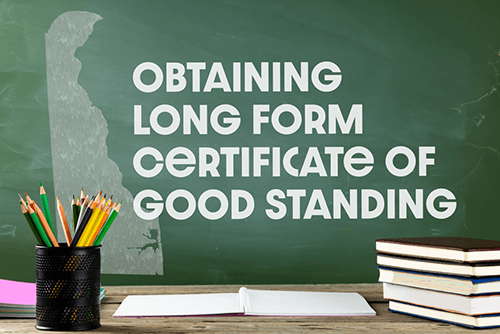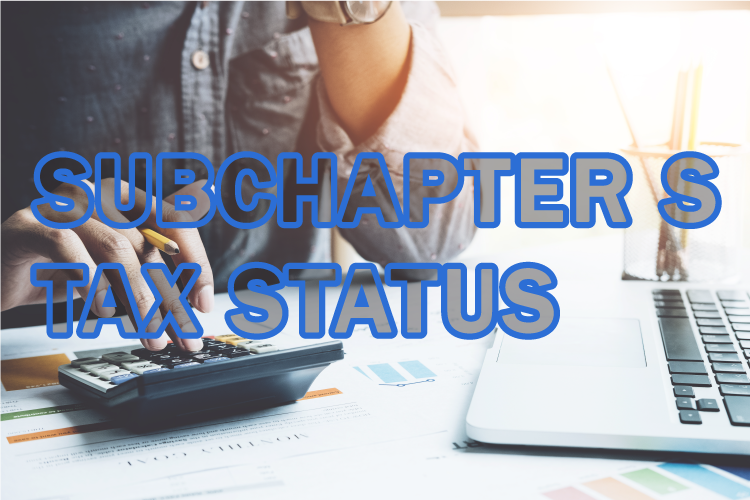The HBS Blog offers insight on Delaware corporations and LLCs as well as information about entrepreneurship, startups, cryptocurrency, venture capitalism and general business topics.
LLC Change of Ownership Checklist
By
Brett Melson
Tuesday, April 23, 2024
 Members of an LLC may change the LLC’s ownership and the terms governing its management and operation by amending its operating agreement. Here are five parties you’ll want to inform when you do so to avoid putting your company at any undue risk... Read More
Members of an LLC may change the LLC’s ownership and the terms governing its management and operation by amending its operating agreement. Here are five parties you’ll want to inform when you do so to avoid putting your company at any undue risk... Read More

How to Register a Delaware Company in New York
By
Devin Scott
Monday, April 22, 2024
 If you want your Delaware company to operate in NY, you need to file for Foreign Qualification and keep your company compliant in both states... Read More
If you want your Delaware company to operate in NY, you need to file for Foreign Qualification and keep your company compliant in both states... Read More

Why Zero Par Value Stock Affects Franchise Tax
By
Amy Fountain
Tuesday, April 16, 2024
 When you form a corporation, the number of authorized shares and the par value will play a role in what your company will pay for the annual Delaware Franchise Tax. Most start-up companies are typically formed with a small number of authorized shares and a low (or zero) par value... Read More
When you form a corporation, the number of authorized shares and the par value will play a role in what your company will pay for the annual Delaware Franchise Tax. Most start-up companies are typically formed with a small number of authorized shares and a low (or zero) par value... Read More

Your Business Location is Very Important and Here’s Why
By
Veso Ganev
Monday, April 15, 2024
 There's several big questions when starting a business requiring meeting clients in person and, arguably, few are more important than "Where?". Read our new blog to see our list of things to consider before choosing your business location... Read More
There's several big questions when starting a business requiring meeting clients in person and, arguably, few are more important than "Where?". Read our new blog to see our list of things to consider before choosing your business location... Read More

Email Deliverability: A Critical Function of Business (Part 2)
By
Brock Albitz
Tuesday, April 9, 2024
Implement SPF, DKIM, and DMARC to ensure that emails are delivered properly. Follow our step-by-step guide to set up email authentication technology today... Read More
My Delaware Corporation Was Voided. Now What?
By
Amy Fountain
Monday, April 8, 2024
 Delaware companies risk being voided if annual franchise taxes go. A voided entity cannot obtain critical documents like Certificates of Good Standing. Though business activities remain valid, the name becomes available for new use. Don't panic - reinstatement is possible through renewal filings and paying back taxes/fees. Learn the straightforward process for restoring your voided Delaware company to good standing... Read More
Delaware companies risk being voided if annual franchise taxes go. A voided entity cannot obtain critical documents like Certificates of Good Standing. Though business activities remain valid, the name becomes available for new use. Don't panic - reinstatement is possible through renewal filings and paying back taxes/fees. Learn the straightforward process for restoring your voided Delaware company to good standing... Read More

Email Deliverability: A Critical Function of Business (Part 1)
By
Brock Albitz
Tuesday, April 2, 2024
 Ensuring important emails avoid the spam trap requires proper email security measures. Setting up SPF, DKIM, and DMARC DNS records define who is authorized to send emails from your domain, authenticating senders and validating email integrity. We dive into properly configuring these critical DNS options to enhance your email deliverability performance... Read More
Ensuring important emails avoid the spam trap requires proper email security measures. Setting up SPF, DKIM, and DMARC DNS records define who is authorized to send emails from your domain, authenticating senders and validating email integrity. We dive into properly configuring these critical DNS options to enhance your email deliverability performance... Read More

Obtaining a Long Form Delaware Certificate of Good Standing
By
Justin Damiani
Monday, April 1, 2024
 Learn about the Long Form Certificate of Good Standing & how it differs from the regular one. Get your Delaware Certificate of Good Standing with HBS today... Read More
Learn about the Long Form Certificate of Good Standing & how it differs from the regular one. Get your Delaware Certificate of Good Standing with HBS today... Read More

What is Subchapter S Tax Status?
By
Brett Melson
Tuesday, March 26, 2024
 Seeking tax efficiency for your Delaware business? Discover the powerful benefits of electing Subchapter S status with the IRS. This unique tax classification avoids double taxation while providing pass-through taxation and liability protection. We break down the requirements, restrictions, and step-by-step process for new and existing corporations to obtain S Corp status... Read More
Seeking tax efficiency for your Delaware business? Discover the powerful benefits of electing Subchapter S status with the IRS. This unique tax classification avoids double taxation while providing pass-through taxation and liability protection. We break down the requirements, restrictions, and step-by-step process for new and existing corporations to obtain S Corp status... Read More

Benefits of a Virtual Office Service
By
Rick Bell
Monday, March 25, 2024
 Depending on the type of business you own, there are many potential advantages to retaining virtual office services... Read More
Depending on the type of business you own, there are many potential advantages to retaining virtual office services... Read More

